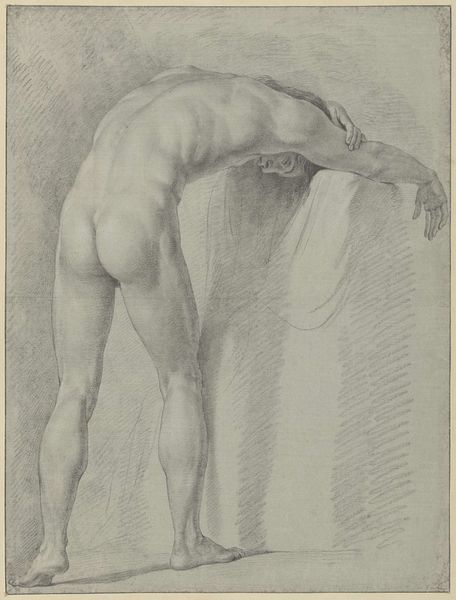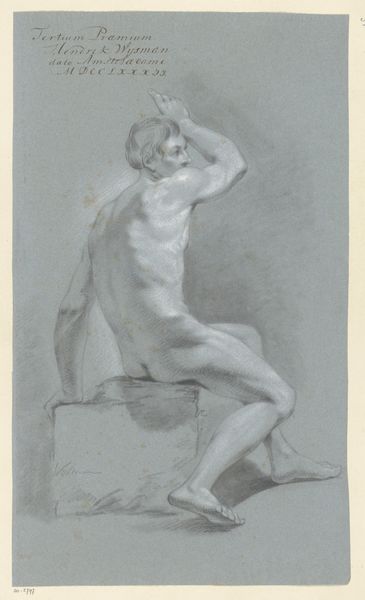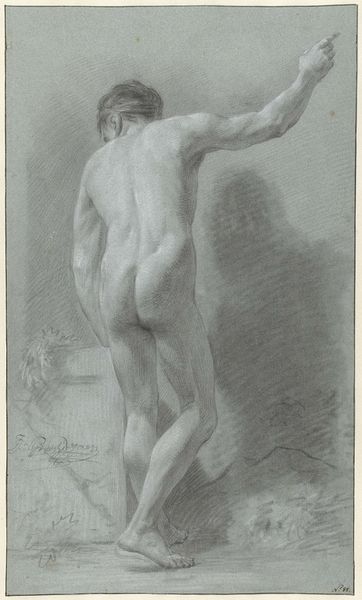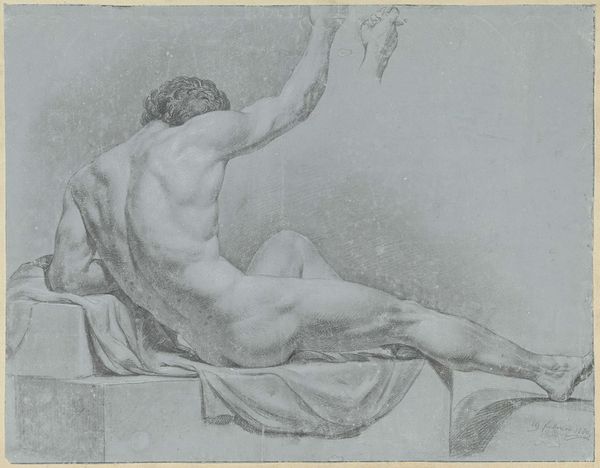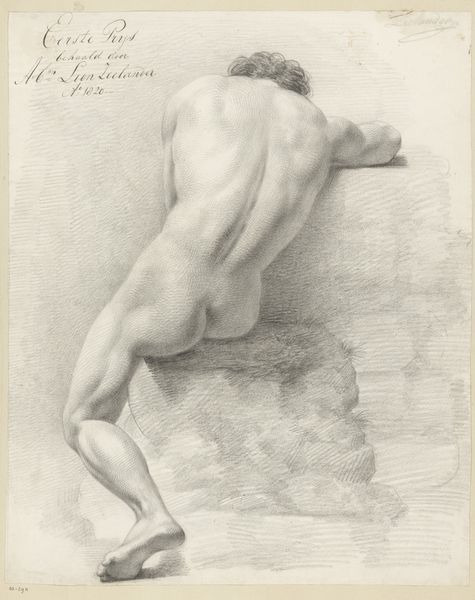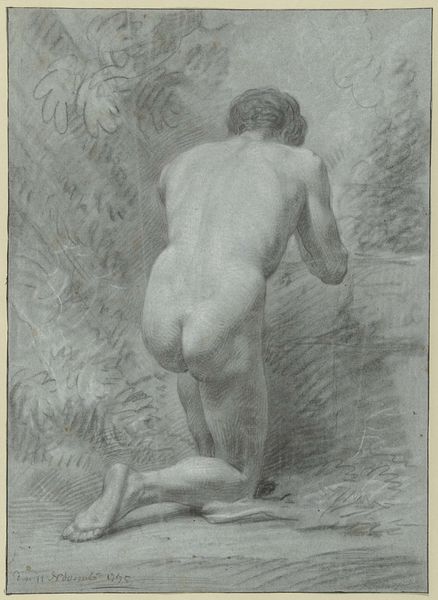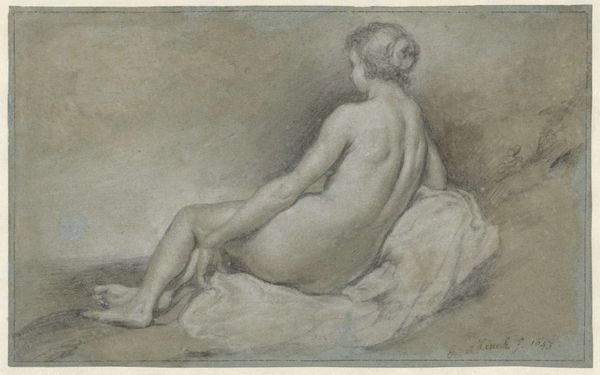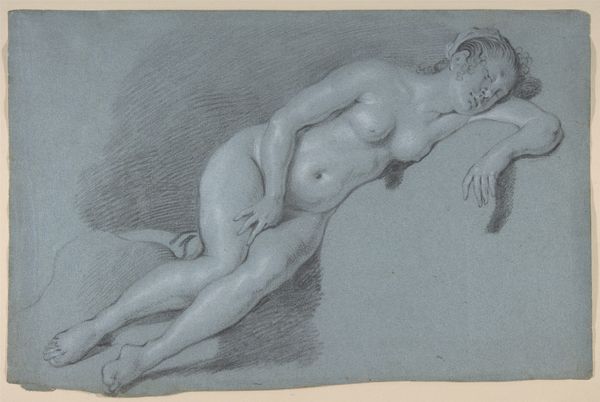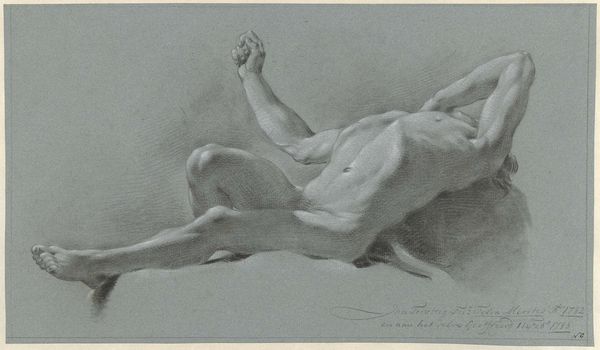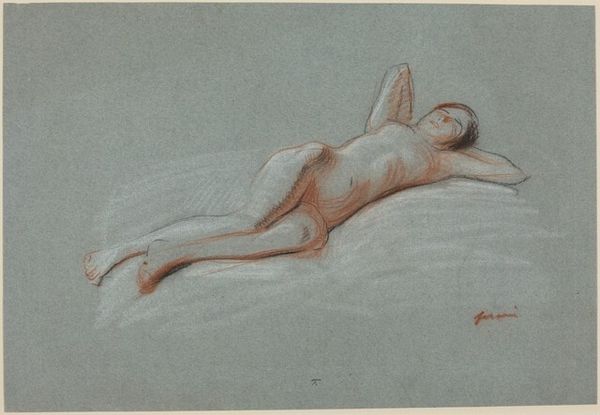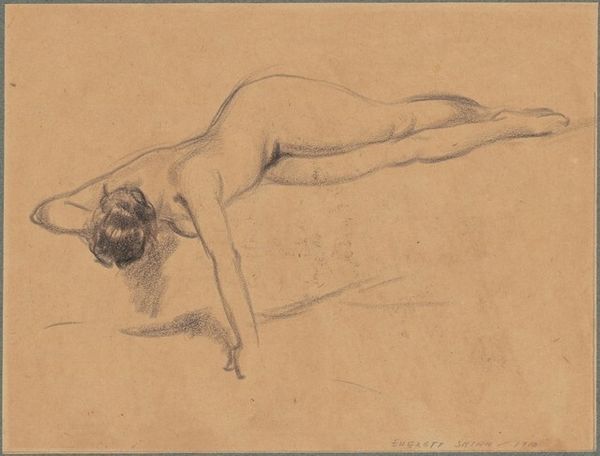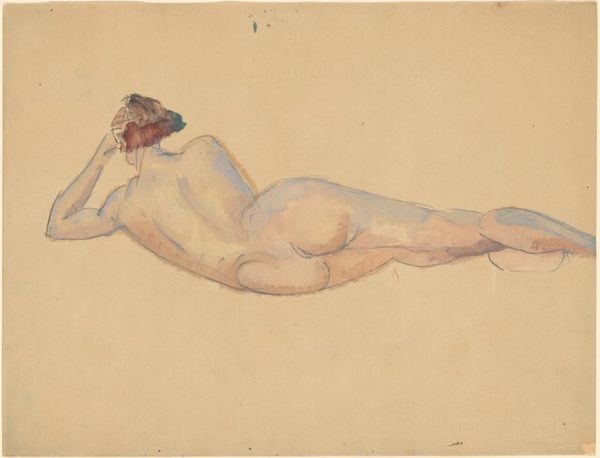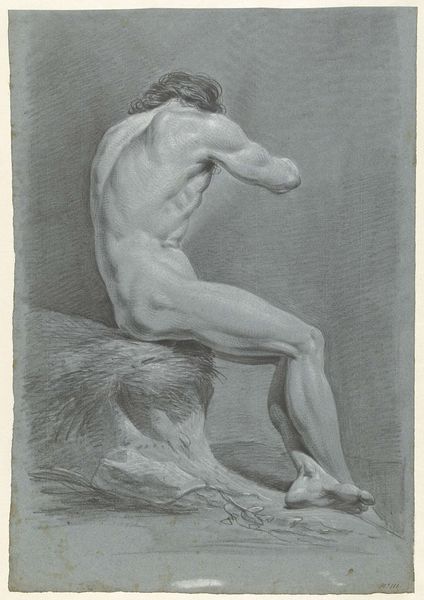
drawing, charcoal
#
portrait
#
drawing
#
baroque
#
charcoal drawing
#
figuration
#
portrait reference
#
portrait drawing
#
charcoal
#
academic-art
#
nude
#
sitting
#
portrait art
Dimensions: height 470 mm, width 314 mm
Copyright: Rijks Museum: Open Domain
Curator: Here we have "Zittende naakte man," or "Seated Nude Man," a charcoal drawing, created sometime between 1700 and 1800 by an anonymous artist. Editor: The first thing I notice is the light, almost ethereal quality of the piece. The way the charcoal renders the man's body is striking, making his muscles look more pronounced in some areas and then fading away in others. Curator: It's very much in line with the academic art traditions of the period. Think of the figure studies that were foundational for history painting. This is likely just such a study, focusing on anatomical accuracy and the idealization of the male form within its socio-cultural context. Editor: Right, the figure seems almost weightless despite its anatomical correctness. It really makes me think about the labor involved; all those hours and hours of meticulous work that went into observing and replicating this form. It begs the question, what were the social and economic conditions of the artist that permitted them to create a piece like this? Curator: And, further, what were the conditions of the model? What did it mean, socially, to pose nude for an artist during this era? Those kinds of dynamics are always at play. This drawing then, in many ways, tells us as much about societal norms of the time as it does about artistic skill. The distribution and sale of artwork would of course determine whether pieces such as this are seen. Editor: I think also about the specific charcoal materials used and the choices involved in creating this effect. You can clearly see the layering of the materials here to get this quality. These kinds of seemingly unimportant production choices affect how we respond to the piece, beyond any grand social narratives. Curator: Absolutely. And that interplay between the artist's intentions, the materials they used, and the societal expectations surrounding art is what makes pieces like "Zittende naakte man" endlessly fascinating. Editor: I concur. Examining the means by which art like this was produced forces you to think about art making in its wider historical frame and reveals how those dynamics have shifted or remained stubbornly constant.
Comments
No comments
Be the first to comment and join the conversation on the ultimate creative platform.
